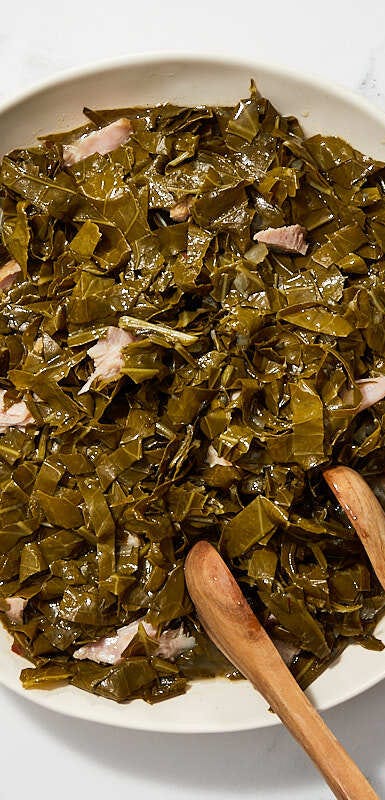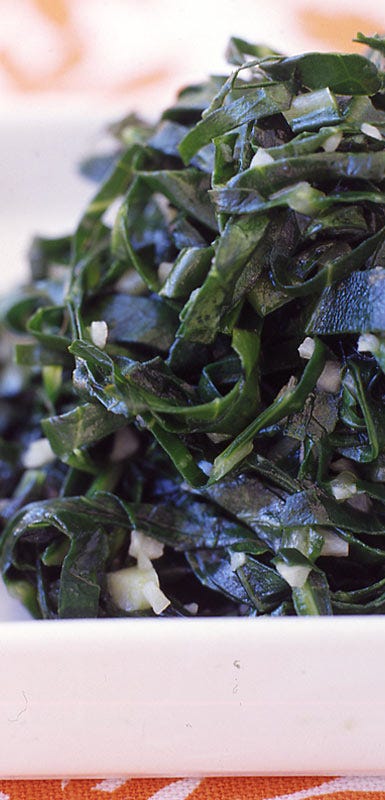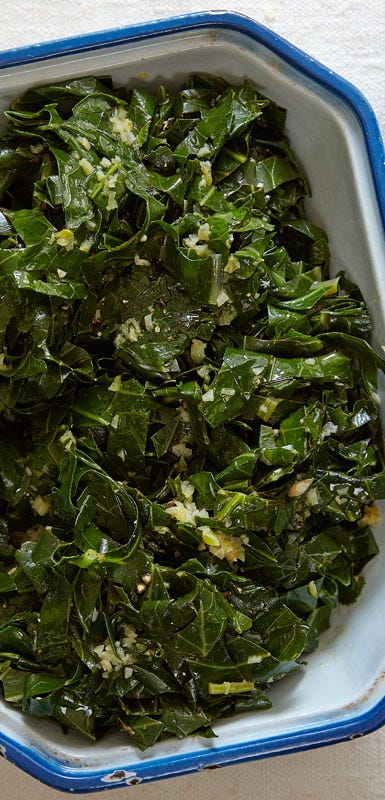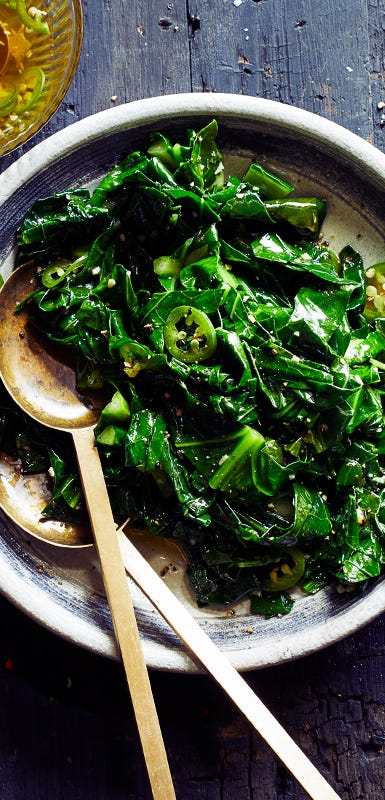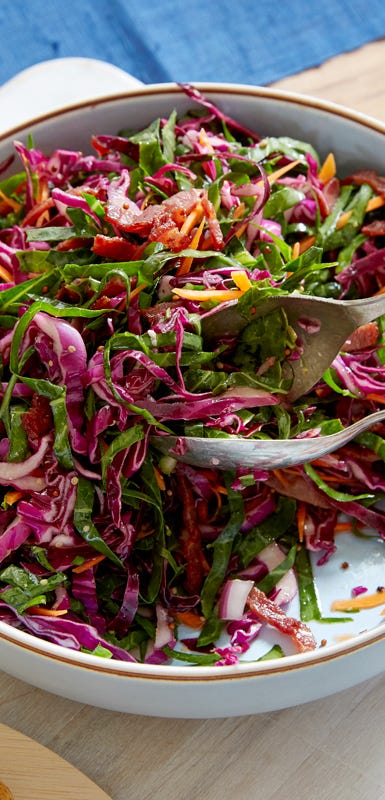Are collard greens healthy?
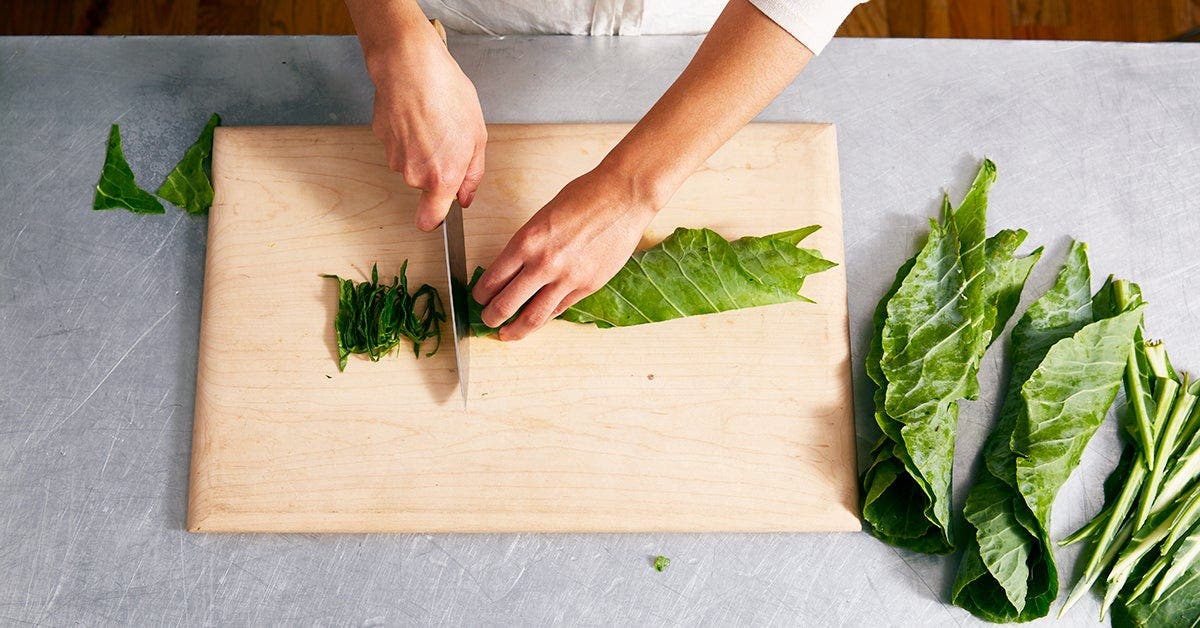
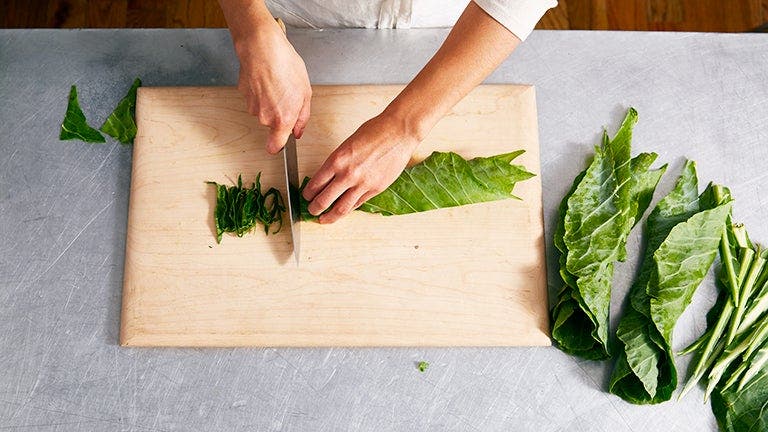
Nothing against kale and brussels sprouts, but we say it’s high time collard greens got a share of the cruciferous-veggie spotlight. With their earthy, mildly bitter flavor, collards are a standout in salads, soups, and sides. What’s more, they’re superstars when it comes to supporting health.
“Collard greens are packed with nutrition,” says Su-Nui Escobar, a registered dietitian nutritionist and spokesperson for the Academy of Nutrition and Dietetics. They’re loaded with vitamins and minerals, as well as phytonutrients that may protect against some diseases.
Keep reading to discover some great reasons to add more collard greens to your diet—plus, plenty of ideas for preparing them.
Top 9 health benefits of collard greens
Collard greens are part of the brassica family—a group of vegetables renowned for their nutritional perks. Eating this dark, leafy green can support health in a number of ways.
1. Help strengthen bones
Collard greens are doubly beneficial on this front. For starters, they’re a source of bone-building calcium, so they can help you get the 1,000 to 1,2000 mg of the mineral recommended per day. What’s more, 1 cup of these leafy greens provides all your daily requirement of vitamin K, a nutrient that helps the body absorb calcium, says registered dietitian-nutritionist Jeralyn Jones, owner of The Lifestyle Dietitian. Indeed, research suggests that getting the recommended 90 mcg per day of vitamin K for women (120 mcg for men) protects against bone fractures and osteoporosis. Your body needs fat to absorb vitamin K, so Jones suggests preparing collard greens with a healthy fat, such as olive oil.
2. May protect against some cancers
Eating more plants in general helps lower a person’s risk of developing many cancers—and veggies like collard greens may be particularly protective. Like their cruciferous cousins, collards are rich in carotenoids, antioxidants that protect against free-radical damage associated with cancer. Cruciferous vegetables also deliver sulfuric compounds called glucosinolates, which fend off DNA damage.
Research points to a correlation between eating cruciferous vegetables like collard greens and a lower risk of cancers of the lungs, stomach, colon, and rectum. Future studies will dig deeper to determine whether this benefit is unique to these specific veggies.
3. Can improve cholesterol levels
Collard greens contain soluble fiber, Jones says, which decreases unhealthy LDL cholesterol in the blood via two ways. First, fiber binds with LDL cholesterol in the intestine so it’s excreted. What’s more, the fiber attaches to bile acids, increasing the excretion of bile salts and prompting the liver to produce more. Since the liver uses cholesterol for this process, it results in a lower level of blood cholesterol, according to a study in Nutrition Research.
4. May reduce the risk for type 2 diabetes
In a research review published in the British Medical Journal, people who ate one-and-a-half servings of leafy greens like collards a day had a 14% lower risk of developing type 2 diabetes than those who didn’t eat as much greens. Leafy green veggies like collard greens contain antioxidants that may protect against the damage that contributes to diabetes, Escobar explains. Plus, the fiber in collards slows the absorption of sugar from food for a stabilizing effect on blood glucose.
5. Help keep you regular
The soluble fiber in collard greens adds bulk to your stools, making them easier to pass. This can fend off constipation, Escobar says.
6. Support the immune system
Collard greens are high in two nutrients that are key for immune function: vitamins A and C. Vitamin A is crucial for the production of T cells, which destroy infected cells and also stimulate antibody-producing B cells. And your body uses vitamin C, Escobar explains, to make disease- and virus-fighting white blood cells.
7. Promote heart health
People who eat diets rich in produce have a lower risk of cardiovascular disease—and green, leafy veggies may offer some of the best heart protection. Their folate helps lower blood levels of an amino acid called homocysteine, which has been linked with heart disease, blood clots, and hardening of the arteries.
8. Protects your vision
Could collard greens help keep your eyesight sharp? It’s possible. The veggie contains lutein and zeaxanthin, antioxidants that have been shown to protect against age-related eye issues, including cataracts and macular degeneration.
9. Supports fetal development
Good to know if you’re trying to get pregnant or already expecting: The folate found in leafy greens like collards is crucial. Getting adequate folate from foods (or the synthetic form, folic acid, via a dietary supplement) can prevent some neural tube defects, such as spina bifida.
Collard greens nutrition facts
Like all nonstarchy veggies, collard greens are a ZeroPoint™ food. A 1-cup serving of raw collard greens contains 11.5 calories and these nutrients:
Nutrient Fat Carbohydrate Protein Fiber Vitamin A Vitamin C Vitamin K Vitamin B6 Folate Calcium Magnesium Potassium | Amount in 1 cup 0.22 g 2 g 1 g 1.4 mg 90 mcg 12.7 mg 157 mcg 0.05 mg 46.4 mcg 83.5 mg 9.72 mg 76.7 mg | % Daily Value 0% 1 % 2% 5% 10% 14% 130% (men); 174% (women) 3% 12% 7% (adults 51 and older); 8% (adults 18-50) 2% 2% |
Can collard greens help you lose weight?
No single food on its own can move the needle on the scale, but in general, eating more fruits and vegetables can support weight loss. Veggies like collard greens are high in water and fiber, which can help you feel full for longer, says Charmaine Jones, a registered dietitian nutritionist and founder of Food Jonezi. That increased satiety can lead to a lower daily intake of calories, and in turn, weight loss.
Eating a diet packed with produce may also help you maintain weight loss, too. A peer-reviewed study by WeightWatchers® found that 89% of people who lost at least 20 pounds on WW—and maintained their lower weight for at least a year—reported eating fruits and vegetables on most or all days.
Can collard greens harm your health?
If you take a blood thinner, such as warfarin, it’s important to keep your intake of vitamin K consistent. That’s because the nutrient helps the body form blood clots, which blood thinners aim to prevent, Jeralyn Jones says. Collard greens provide more than the daily recommended serving of vitamin K, so don’t radically increase—or decrease—your intake of them if you’re on a blood thinner. And keep in mind that if you have any health condition, you should always discuss dietary changes with your doctor first.
Tips for buying, storing, and preparing collard greens
Load up on collard greens at the farmer’s market or in the supermarket produce aisle. Here’s how to take them from your shopping basket to your table.
Buying collard greens
Look for a bunch with firm, deep-green leaves. “Avoid leaves that are wilted or have any brown or yellow spots,” says Charmaine Jones. This means that the collards are starting to dry out or spoil, which will affect their taste.
Storing collard greens
Keep collard greens unwashed in a produce bag in the fridge, says Jeralyn Jones. Excess moisture can cause greens to spoil more quickly.
Preparing collard greens
Okay, you’ve got your collards and you’re ready to enjoy them, but first you’ve got to prep them. To do it, tear out the stem and rinse the greens thoroughly. Then try one of the easy methods below.
- Enjoy them raw: Whole leaves (minus the stems) work well as taco shells or sandwich wraps because they’re sturdy enough to stand up to fillings, says Jeralyn Jones. You can also chop the leaves and add them to your favorite salad—raw collards have a slightly less bitter taste than kale.
- Steam them: Many recipes call for stewing collard greens for an hour or more—and there’s a reason that method has stuck. Extended cooking softens the leaves and removes some of the bitterness, Jeralyn Jones says. To boost their flavor while shortening the stove time, chop up prepped greens into bite-size pieces and cook in a steamer basket for 5 to 10 minutes.
- Toss them into a soup pot: Amp up the flavor and nutrition of your favorite soups and stews by adding a few handfuls of chopped collard greens during the last half-hour of cooking, Escobar suggests.
6 delicious collard greens recipes
Whether you’re looking for a new riff on your family’s favorite—or you’re new to cooking this veggie—we’ve got you covered, with six delicious WW recipes.
The upshot: Are collard greens a superfood?
In our minds, all vegetables are superfoods! After all, each one has a unique combo of nutrients that can help support and improve your health, Escobar says. And dark, leafy greens in particular may protect against cancer and type 2 diabetes. Adding collard greens to your diet counts toward the recommended daily minimum of five servings of fruits and vegetables, and hitting this target is associated with a longer lifespan.
--
Sharon Liao is a freelance writer and editor specializing in health, nutrition, and fitness. She lives in Redondo Beach, California.
Related articles
- The secret to keeping veggies fresh
- 7 common mistakes to avoid when becoming a vegetarian
- Should you try the green mediterranean diet?

